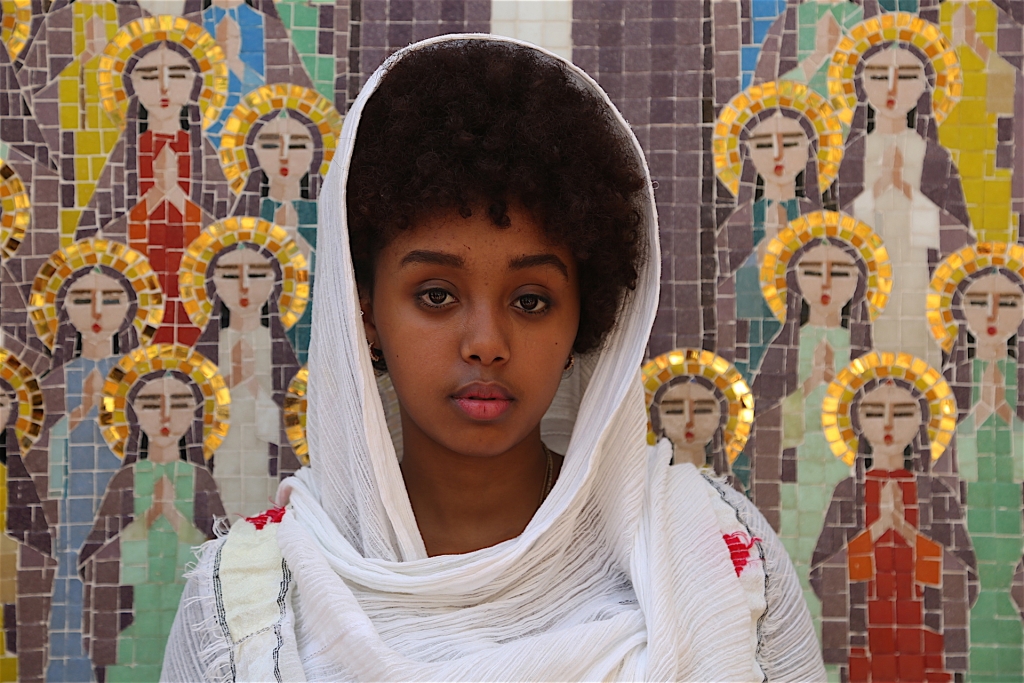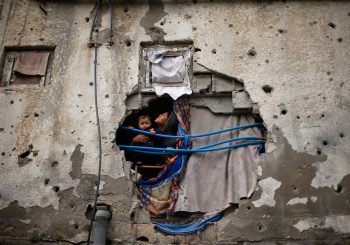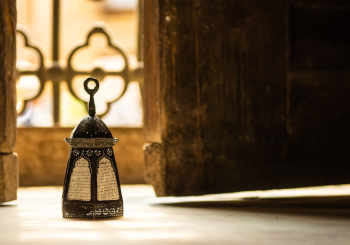Ubuntu Art Gallery’s latest exhibition offers a beautiful insight into the art of photography. Located in Hassan Sabry street in Zamalek, the contemporary art gallery, established in 2014, operates two exhibitions at the same time each month in their two story headquarters; it also frequently introduces new artists. This month, Ubuntu Included its first photography exhibition, ‘Through The Lens,’ featuring works by four different photographers. Meanwhile, on the second floor, it is hosting a tribute exhibition to the late ‘Safwat Abbas’ that features the artist’s paintings.
One of the most acclaimed artists of ‘Through The Lens’ is Jonathan Rashad. Rashad is a multi-hyphenated artist, from photojournalism to film directing, he has been doing it all since 2008. Rashad’s focus on the humanitarian side of international disasters is painted all over his work. His photos symbolize a long journey and a destination, whether it is in the birds flying over the pyramids or the restless faces of the civilians who have seen things beyond comprehension despite the onlooker not knowing their stories.
Rashad’s work is brimming with humanity in the bright green grass and the deep green wall paint. Pinks pop up through the photos, and despite the nature theme of the photos, the bright color does not look out of place, instead it is a lovely respite from the heavy subject matter. His colors, despite being muted, are tinged with life like light at the end of the tunnel.

The second featured artist is Malak Kabbani, a London-based Egyptian-German photographer. Kabbani loves some spontaneity in her work rather than being overly pedantic with the details.
The impromptu theme gives Kabbani’s work a more energetic and dynamic existence; none of the pictures are contrived or overly posed. A photo focuses on a family in the back of a taxi car, out of main focus is the supposed patriarch of the family, who looks on smiling at the out of shot horizon. In other photos, a belly dancer dances without care and horses walk aimlessly. Kabbani cements the perfect, spirited moments in time in color and in black and white. Even her still images have a soul to them, there are signs of existence in the car tire marks in the desert, or the discarded cigarette and jewelry—possibly all the remnants of a memory or a nice party.

The third featured artist’s work is the most visually different out of the rest of the exhibition and its minimalist simple vegetation-themed pictures steals the viewer’s full attention. Using several mediums from photography to video and sculpting, the visual artist Natasha Yonan delves into the semiotics and symbols of disregarded objects and passing moments.
Upon first look, it looks like scanned images of random plants and petals, but upon further inspection, the plants tell a story. Some of them are withered and dull, some are vibrant and pink. One particular image sticks out the most; it is different from the entire collection: a vibrant pink, bionic self-portrait as described by the artist herself. Its vivid colors bring together and complete the collection, a bold contrast from the dainty pastels on white background.

The last featured artist of the exhibition is Raymond Khalifé, a Lebanese photographer who has been a Cairean since 1987. He has been working in the hotel business before pursuing a passion for photography that he had since a very young age.
Khalifé documents the raw and real moments of every day. It feels like a result of his work in hospitality translated to love of people in the way of the beauty of the fleeting moments between people whose paths might never cross again. His photos ooze love for Egypt and the Egyptian people. One of his most popular photos captured a nameless lady with her Cane Corso dog, Hira, in El Darb El Ahmar neighborhood. The photo went viral when it was first taken in 2018 and it took Egyptian social media by storm. To the people who are not familiar with the rest of his work, this is the quintessential Khalifé piece—the pinnacle of care and love. Then, when the viewer discovers the rest of his work, it is even better: the vibrancy of the mundane days, of the daily commute, of the animals, and of the working women.

Ultimately, Ubuntu’s first photography exhibition is a win, and stands for everything they advocate for. According to its website, the name Ubuntu is a Swahili word which means “I am because we all are”, which is the best representation for the identity of the exhibit. Its unified entity is Egyptian at its core, but also represents something that is bigger than that and transcends borders.
The photographs are available to purchase at the exhibits with prices ranging from USD 150 (4,635 EGP) all the way to USD 4500 (139,046 EGP).
The exhibit is open daily to peruse from 11am to 8pm, except for Fridays.







Comment (1)
[…] Source link […]